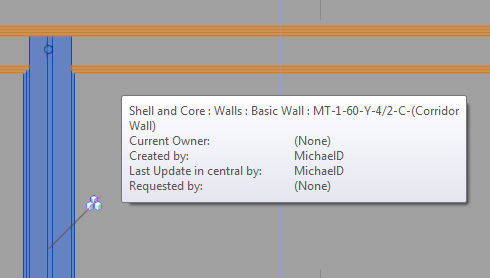
Rudolf Revitalizer Honke
has frequently requested better documentation of the Revit API *Utils classes, e.g., when he pointed out
the handy utility classes back in 2013.
This is still an interesting and somewhat poorly documented area in the Revit API, as we can see from the discussion below:
The development team answered the following recent Revit API forum thread on API access to the workshared element user history:
Question: Is there any access at all to Workshared Element User History?
If I turn on one of the worksharing display modes and hover my mouse over any element, I get a popup like this advising me of who that element was originally created by and who last updated it in the central model:

Is it possible to programmatically access these fields?
Answer: I was unable to find any information about this, so I passed on the question to the Revit development team.
Their answer is short, succinct and to the point: this is in the WorksharingTooltipInfo class acquired from the WorksharingUtils.GetWorksharingTooltipInfo method.
So we are saved once again by our beloved Utils classes.
They and the important functionality they provide are apparently still hard to find.
Many thanks to Scott and Arnošt for pointing this out, and the importance of improving their visibility.
My colleague Augusto Gonçalves recently pointed out an article on 10 features in C# that you really should learn (and use!).
While I do not totally agree with them all, similarly to some of the options voiced in the comments section, it is still definitely an interesting and worthwhile quick read.
Addendum: In his comment below, Guy Robinson points out another interesting related link to the MSDN article on new features in C# 6, which is actually more structured and in-depth than the former.
I really dislike acronyms that I do not know the meaning of.
I quite like them when I do, though, and I am certain that my communication partner knows them as well.
I just discovered this one that I like, since it expresses a sentiment I often share: TL;DR – too long; didn't read.
Of course, this leads back to the first topic again: the *Utils classes are all documented in the Revit API help file RevitAPI.chm... all you have to do is read it :-)